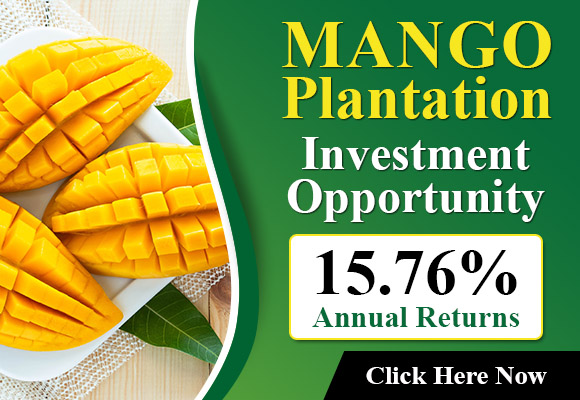Australian Horticulture has surpassed the highest production levels, crossing $17 billion dollars during the year 2023-24. According the Hort Innovation annual statistical handbook, this marks an increase of 4.3 percent increase in production over the previous year which was a result of exports playing an important part in this.
11. The eleventh issue of the Australian Horticulture Statistics Handbook covers more than 75 different lines of horticulture throughout the nation. Hort Innovation CEO Brett Fifield states that the numbers are even though Australian farmers continuing to face records when it comes to input costs as well as having recently experienced the effects of incursions into biosecurity as well as national catastrophes.
“Our goal is to create profitable and sustainable business that is based on innovation” Mr Fifield declared during the internet publication of the study. “Today we have good news, Australian horticulture is well ahead of its goal to become the size of a $20 billion industry before 2030. Fruit industry has been the main driver of in the expansion, with values of production increasing by nearly one-half billion dollars (7.8 percent) in order to achieve a value that was $6.82 billion. It was fueled by the impressive results in citrus, berries and bananas. The growth in exports is an essential aspect of our sustainability. It has reached record levels close to $3 billion. The reason for this is the export of fruits, particularly citrus and avocados. The vegetable industry has been growing, and as vegetable production have increased, overall vegetable production decreased by 2.4 percent.”
Hort Innovation’s Director for Industry Insights, Lucy Noble, said that the horticulture industry is on a steady growth direction, and reaching an staggering $17 billion mark can be a testimony to that sector’s resilience even in the face of challenging times.
“The mean annual growth rate for compounding annually is 5.5 percent – and this is a remarkable achievement,” she said. “This year’s farmgate values rise by 700 million more than prior year. The reason for this was the massive growth in the value of fruit. This witnessed production value rise by nearly a half billion dollars (8 percent) and reach $6.8 billion. The worth of the hort industry was also boosted by a rebound in nuts that came back after a tough 2022-23 year and saw production increase by almost 500 million dollars in the year to $1.23 billion.”
But, Ms. Noble insists that this wasn’t a universal report, and even with the increase in the nut and fruit lines, raising the overall worth of the business The vegetable market declined slightly, with value falling by 2.4 percent to fall at $5.7 billion.
Production volumes have rose by 7 percent during the year that was just completed, as Freshlogic’s Managing Director Martin Kneebone, whose company has provided the figures for the book, states the fact that there’s seen a rise in several areas.
“That boost translated to better value and was more than the negative effects of the categories which are down,” he said. “The most popular categories were avocados, tomatoes the summer fruits, and fruits – and far outweighed the less valuable categories. The above sums up what is happening over time There are times that some of the diverse groups are either in the up and down range, however there’s not a single-size that fits all. There will be different circumstances and exposures to different the markets for exports. It appears that this is holding the promise of a steady increase in the future – which is what’s happened in the last year, particularly due to the growth of production regaining and higher numbers.”
Exports of fresh horticulture also have increased, according to the Handbook, and reached the record-breaking amount of $2.75 billion that was driven by strong exports of fruits especially with avocados and citrus. It continues the impressive trend of growth in exports that has seen over the past several years in the field. Although the worth of the fresh horticulture exports increased over all, there were exceptions with table grapes dropping 19 percent in terms of volume, and value dropping 14 .
“If you examine the larger groups, there are seven at an upper level, which is above 400.000 tonnes per year when it comes to exports” Mr Kneebone declared. “Six of the categories have more volume that was higher and were able to hold or had higher price. This is positive, and more than offset the dreadful period for grapes when the production numbers were affected by lower yields. Another tier of categories that are generating exports which is dominated by avocados summerfruit, and melons that is growing and taking a positive direction toward a higher standard. The prices in most categories are increasing as the growth in volumes increases, though there are certain exceptions. It is a positive sign that the market has acceptance of better quality goods as well as the value of a product from an Australian source. This is across a broad enough variety of categories that it is possible to make that determination as well as a good way to increase exports.”
Export marketing in Australia has proven to be an absolute  strength and an engine for growth, as per Mr. Kneebone. However, the value of incremental sales is that are still generated in the domestic market through items like smaller portions of food as well as waste management and more trips to the supermarket. This means that fruits and vegetable products can be purchased by more people that has given higher value along with a growth in the population that he believes can be a huge boost for demand. One per percent increase in population is equivalent into more than 35,000 tonnes of annual demand – or an estimated value of $120 million for wholesale and it is growing twice as fast.
strength and an engine for growth, as per Mr. Kneebone. However, the value of incremental sales is that are still generated in the domestic market through items like smaller portions of food as well as waste management and more trips to the supermarket. This means that fruits and vegetable products can be purchased by more people that has given higher value along with a growth in the population that he believes can be a huge boost for demand. One per percent increase in population is equivalent into more than 35,000 tonnes of annual demand – or an estimated value of $120 million for wholesale and it is growing twice as fast.
To access the entire Australian Horticulture Statistics Handbook: Click here
For further information
Hort Innovation
Phone: +61 2 8295 2300
[email protected]
www.horticulture.com.au
Source: The Plantations International Agroforestry Group of Companies
